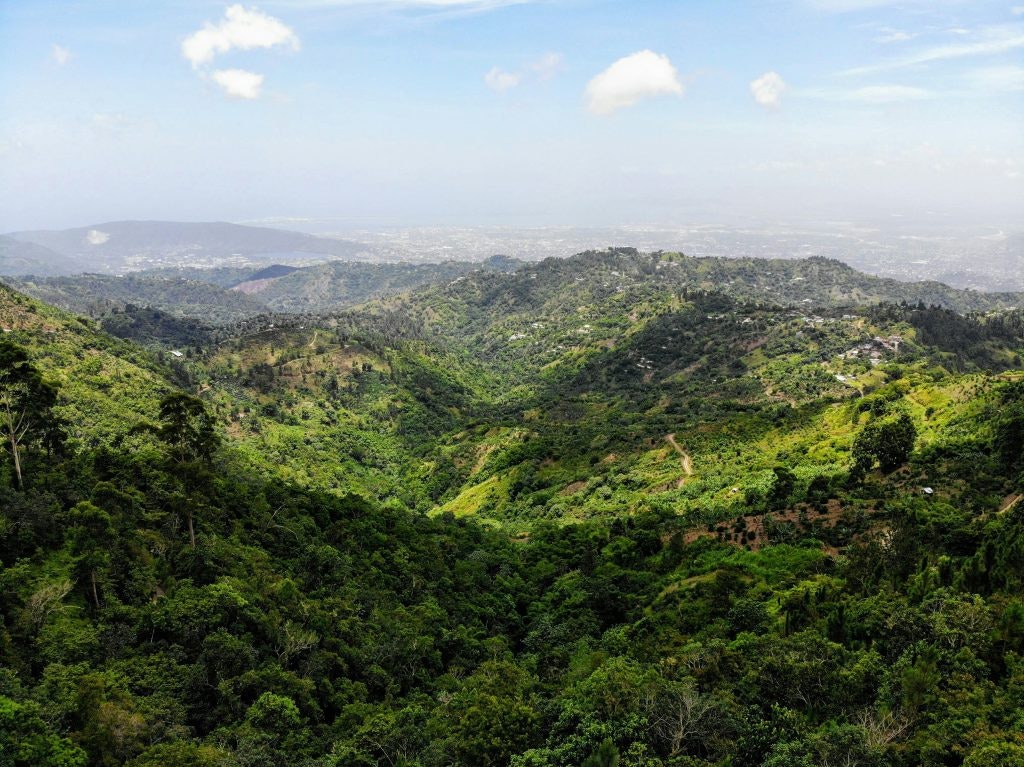







Jamaica is the third-largest island in the Caribbean Sea and the largest English-speaking island of the Caribbean islands. This beautiful island nation is known as the birthplace of reggae music and features natural landmarks like Dunn’s River Falls, the John Crow Mountains, and Blue Mountain Peak.
While English is the official language, most Jamaicans also speak Jamaican patois.
A former British colony from 1655 to 1962, Jamaica was the first Caribbean country to gain independence from British rule on August 6, 1962. Today, it remains a popular winter escape for many Brits like myself. The rich history and distinct Jamaican culture are celebrated worldwide.
Here are some key facts about Jamaica:
| Key Facts About Jamaica | Details |
| Population | 2,837,381 |
| Official Languages | English official, Jamaican Patois widely spoken |
| Currency | Jamaican Dollar (JMD) |
| Capital | Kingston |
| Independence | Jamaica gained independence from Britain on August 6, 1962 |
| Government | Parliamentary democracy under King Charles III (formerly under Queen Elizabeth II) |
| Jamaica’s National Bird | Doctor Bird (Red-billed Streamertail) |
| Pirates | Port Royal was the “Wickedest City on Earth” |
| Exports | Known for rum, Blue Mountain Coffee |
If you can’t travel to this beautiful country in the Caribbean, learning fun facts about Jamaica is the next best thing!

Jamaica dominates sprinting, producing some of the fastest runners in history. Usain Bolt, an eight-time Olympic champion, still holds the 100m and 200m world records at 9.58 and 19.19 seconds, set in 2009.
Jamaica has also produced Yohan Blake, Asafa Powell, Shelly-Ann Fraser-Pryce, and Elaine Thompson-Herah, who have dominated global sprinting.
Many attribute this success to genetics, training methods, and a diet rich in yams, which some believe boosts muscle performance.
Jamaica made history in 1988 by becoming the first tropical country to compete in the Winter Olympics with a bobsled team. The team’s determination inspired the hit 1993 Disney movie “Cool Runnings.”
While they finished last in Calgary, Jamaica later won gold at the 2000 World Push Championships in Monaco.
Tourists can experience a jungle bobsled ride at Mystic Mountain, inspired by the team’s story.
Kingston, the birthplace of reggae, has been a UNESCO City of Music since 2015. Kingston has a high concentration of recording studios and is the birthplace of the following musical styles.
The Bob Marley Museum in Kingston is one of the most visited cultural attractions in Jamaica.
Ian Fleming, creator of James Bond, wrote most of the Bond novels at his Goldeneye estate in Jamaica.
The first Bond film, Dr. No (1962), was also filmed on the island, and Jamaica inspired scenes in Live and Let Die and No Time to Die (2021).
Jamaica honors Fleming’s legacy with the Ian Fleming International Airport in Boscobel, Saint Mary Parish, near Ocho Rios.
In the 17th century, Port Royal was one of the richest and most dangerous pirate cities in the world. It was home to Henry Morgan, Calico Jack, and Blackbeard, who used Jamaica as a base for raiding Spanish ships.
A 1692 earthquake sank most of Port Royal underwater, but divers can still explore the submerged ruins today.
Bonus Fact About Jamaica: Tourists can visit Fort Charles and see relics from Jamaica’s pirate history.
Jamaica is home to the Homerus Swallowtail, the largest butterfly in the Western Hemisphere, with a wingspan of up to 6 inches. It is endemic to Jamaica but critically endangered, with conservation efforts focused on Cockpit Country and the Blue Mountains.
Grown at altitudes above 5,000 feet, Jamaican Blue Mountain Coffee is one of the rarest and most expensive coffees in the world. Its flavor comes from the cool climate, volcanic soil, and misty conditions, which slow the ripening process and enhance its smooth, mild taste.
Only beans meeting strict Jamaica Coffee Industry Board regulations are labeled Blue Mountain Coffee.

The high altitude and rough terrain make it expensive and difficult to produce Blue Mountain Coffee
Jamaica’s black, green, and gold flag was designed in 1962 through a public competition to mark independence from Britain.
The motto “Out of Many, One People” reflects Jamaica’s diverse heritage, including African, European, Indian, Chinese, and Middle Eastern influences.
Jamaica has the most churches per square mile in the world, according to the Guinness World Records. The National Library of Jamaica estimates 2.75 churches per square mile, totaling over 1,600 churches nationwide.
Religious diversity includes:
Bonus Fact About Jamaica: Many Jamaicans attend church services lasting over four hours.
Jamaica isn’t just an island—it’s the peak of a massive underwater mountain range.
Its tallest peak, Blue Mountain Peak (7,402 feet), is the highest point in the Caribbean outside of the Dominican Republic.
This geological feature means visitors can relax on a beach that sits atop a submerged mountain range.
Thanks to Christopher Columbus, Jamaica was ruled by Spain from 1509 to 1655 before the British took control after the Anglo-Spanish War.
The Rastafarian movement began in Jamaica in the 1930s. People of African descent, who are seen as living in exile, are connected to a pan-African consciousness that emphasizes liberation and a return to Africa, regarded as Zion, which is central to Rastafarian beliefs. It is a spiritual and cultural movement inspired by Emperor Haile Selassie I of Ethiopia, who is seen as divine by Rastafarians.
Rastafarianism is closely linked to:
Fun Fact About Jamaica: The colors red, gold, and green seen in Rasta culture are inspired by Ethiopian heritage.
💡 Want more trivia?
Browse all Fun Facts articles.